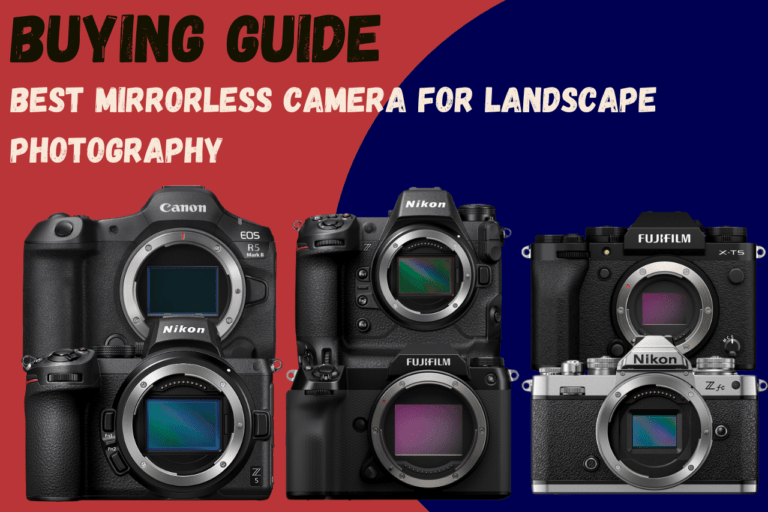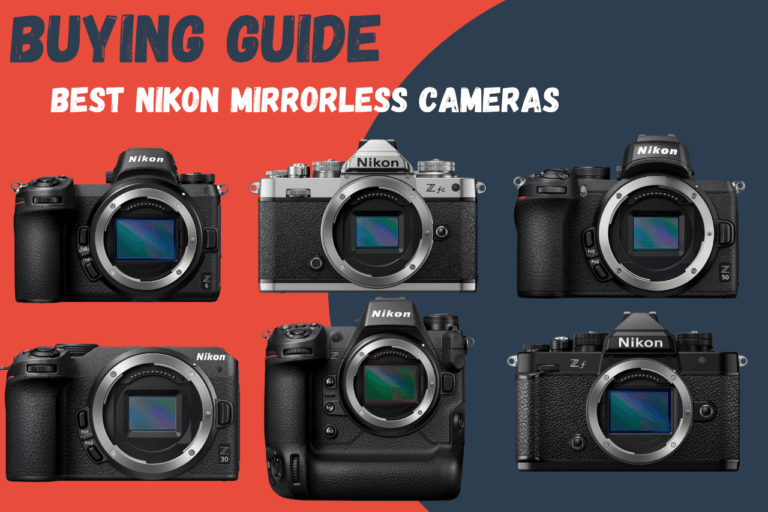Did you know that mirrorless camera sales jumped by over 40% recently? Yep, mirrorless cameras have dominated the market in the last few years.
This means that I am not here to tell you which camera is better because that would be unfair (point-and-shoot cameras are mainly directed to beginners, while mirrorless cameras require some photography knowledge, making them a great choice for professionals).

So, I am just going to go over the main differences: size, portability, lens options, sensor technology, image and video quality, battery life, and price to see which camera is good for YOU.
An Overview Of Both Camera Types
A professional photographer may say “Of course mirrorless cameras win, what’s there to compare anyway”,

I hear you. But, for a beginner, point-and-shoot is still a good choice especially if they are just starting out.
Now, a compact camera is built for simplicity. Its compact design and fixed lens allow automatic settings to do most of the work. So, these cameras are easy to use, ideal for everyday snapshots and travel photography, and their design keeps the camera small and lightweight.
A mirrorless camera, however, was first designed to fix some of DSLRs’ problems. The main one was the mirror which restricted the sensor from operating ideally.
You can see all the differences between a DSLR and a mirrorless in a previous article where I explained everything you will need to fully understand this war between DSLR and Mirrorless.
Anyway, when that mechanism was removed, we ended up with a “compact” camera with one very big difference (compared to point-and-shoot) which is the interchangeable lenses.
Point and Shoot vs Mirrorless Camera: 8 Key Differences

Size and weight
Obvious things first, the size. Point-and-shoot cameras are small because they were designed to be pocket-friendly. Their minimal size makes them ideal for travel and daily use. Plus, they have few moving parts, which often adds to their durability.
On the other hand, mirrorless cameras are larger. Although they are lighter than DSLRs, their bodies tend to be bulkier than those of point-and-shoot models.
Also, the need for an interchangeable lens system adds size, and when a lens is attached, the overall weight increases. For many, the extra size means sacrificing some daily convenience.
📌Summary
If carrying the lightest gear is your priority, a point-and-shoot camera is best. But, if you value the ability to upgrade lenses and manual controls, you may accept the extra weight of a mirrorless system.
Portability and Ease of Use
This leads to the next point which is portability. A point-and-shoot camera is ultra-compact. It easily fits in a pocket or small bag.
Also, its simple interface makes it attractive for beginners, and with automatic settings handling exposure and focus, you can start shooting right away without a fuss. This simplicity is perfect for spontaneous travel photography and daily snapshots.
A mirrorless camera is still portable but not as compact. Its interface requires some knowledge of Aperture, Shutter, ISO, and how to compose your shots to make the best out of it.
Sure, you can set the camera on Auto, but that kind of defies why a mirrorless camera was created.
📌Summary
For everyday use, the lightness and simplicity of a point-and-shoot is a decisive advantage. If you prefer more control and are willing to carry a slightly bulkier system, a mirrorless camera is a solid choice.
Flexibility and Lens Options
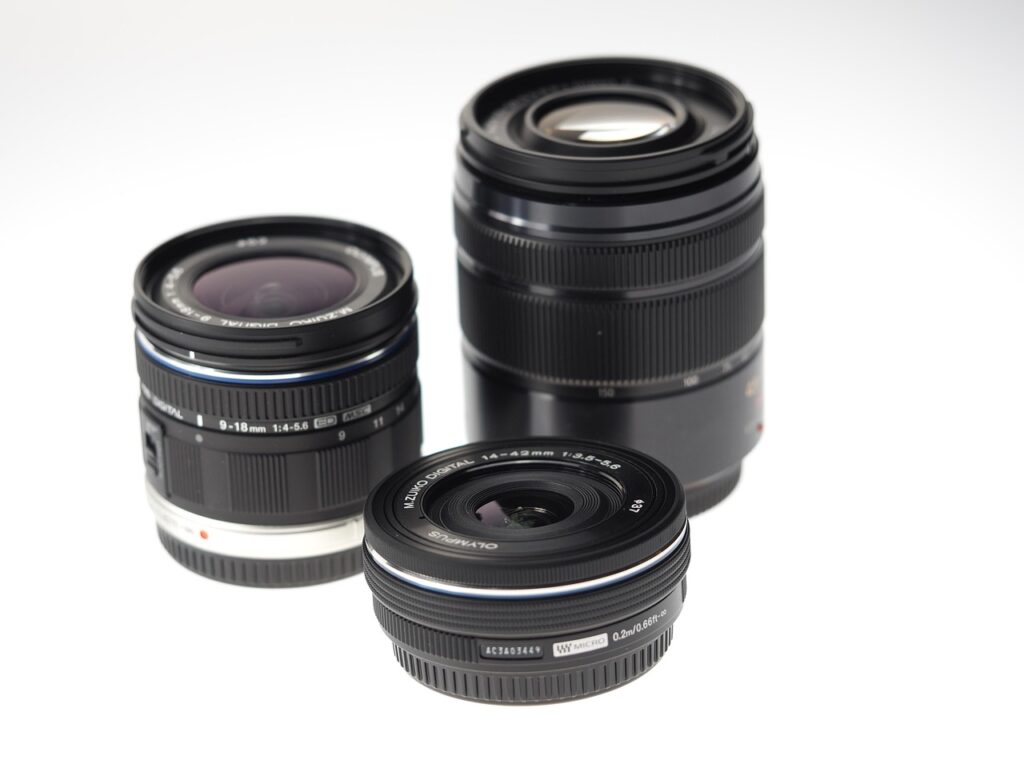
When it comes to lens options, the two systems cannot be more different.
Point-and-shoot cameras have a fixed lens that is optimized for general shooting. There is no need to swap or adjust it. This fixed design keeps the system simple and reliable. However, it’s not for creative usage. You are locked into the lens’ focal range and aperture.
In contrast, mirrorless cameras allow you to change lenses. This flexibility lets you tailor your equipment to your shooting style. Need a wide-angle lens for landscapes? There’s an option. Looking for a fast prime for portraits? You can choose one.
Another great perk of mirrorless cameras is adapters. A lot of companies offer adapters to use your DSLR lenses on your mirrorless camera, or even use legacy lenses (which were used with old 35mm film cameras). So, you have all the creative possibilities to fine-tune your camera’s performance.
📌Summary
If you shoot mostly casual scenes and want a hassle-free experience, a point-and-shoot works well. If your photography demands varied focal lengths and creative control, mirrorless cameras provide the necessary flexibility.
Sensor Technology
The sensor is the heart of a digital camera. It captures light and converts it into an image. So, I will get a little technical here.
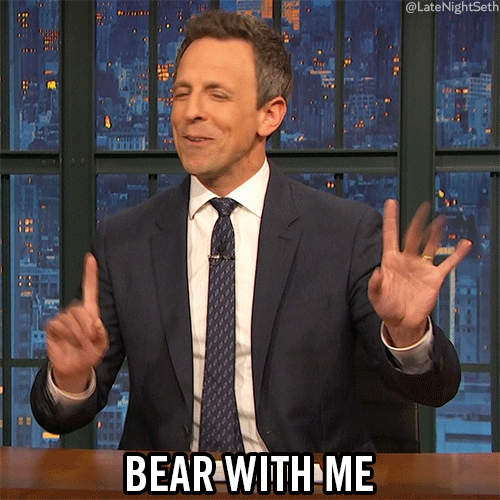
I will just go over different sensor types used in both point-and-shoot and mirrorless cameras. But, I will keep it as simple as possible.

Sensor Types and Sizes
Point-and-shoot cameras traditionally use smaller sensors (6mm x 4.5mm), often referred to as 1/2.3″ sensors. These sensors are compact and cheap. Plus, they work well in bright conditions and are suited for casual photography.
However, their small size limits light-gathering ability. This can affect image detail and dynamic range, particularly in low-light situations.
Mirrorless cameras, on the other hand, usually have larger sensors. The three main ones are:
- APS-C sensors (22mm x 15mm): These sensors are larger than those in typical point-and-shoots. They capture more light, offer better detail, and handle noise better. Many entry-level mirrorless cameras use APS-C sensors, to balance size and performance (and price).
- Micro Four Thirds sensors (17.3mm x 13mm): Slightly smaller than APS-C, but they still provide a noticeable improvement over point-and-shoot sensors. They are popular in many mirrorless models of OM (Olympus), Fujifilm, and Panasonic, and they are usually compact and decent in performance.
- Full-frame sensors (36mm x 24mm): These sensors, which are the same size as traditional 35mm film, are found in higher-end mirrorless cameras. They deliver excellent Images and video in low light, superior dynamic range, and very high resolution. However, full-frame sensors add to the camera’s size and cost.
Image Quality

Image quality depends on many factors, but sensor size plays the most significant role.
Since point-and-shoot cameras have smaller sensors, they produce pretty good images with balanced colors and adequate detail ONLY when lighting is favorable.
But, once you put them in challenging conditions like a low light scene, you start seeing noise.
For mirrorless cameras, there is nothing bad to say here.
Thanks to their larger sensors, they produce great images. Whether APS-C, Micro Four Thirds or full-frame, these sensors capture more light and detail. This means you get better depth of field control, higher resolution, and improved dynamic range.
Plus, even in challenging lighting—like indoors or at night—mirrorless cameras show less noise and more accurate color reproduction.
📌Summary
For professional or creative photography where image detail matters, mirrorless systems are the clear choice. For everyday use where convenience and simplicity are paramount, a point-and-shoot delivers satisfactory image quality.
Video Quality
Well, frankly, I just wanted to add this one for the fun of it. There is no comparison to be had here.

Point-and-shoot cameras are designed primarily for photography. They usually don’t have 4K video, although some high-end models do.
Models that cost thousands of dollars, which you can invest in a high-end mirrorless camera!

But since we are only talking about entry-level compact cameras, these are limited to 1080p.
In contrast, mirrorless cameras are built with advanced video features in mind. Many modern mirrorless models offer 4K recording as a standard feature.
They also have some great autofocus systems like eye detection and advanced in-body image stabilization (IBIS). The days of chasing focus, or losing your subject mid-shoot are gone!
Plus, you get manual video controls, to adjust focus, exposure, and frame rates. This means that mirrorless cameras are great hybrids (great for both photos and video).
Battery Life

Well, the little guy is probably going to win this one. Point-and-shoot cameras are engineered for simplicity. So, their smaller sensors and limited processing demands mean longer battery life.
For everyday shooting, you may find that one charge lasts all day. You may say that they have an electronic viewfinder and an LCD screen, but they don’t need much power to run.
For mirrorless cameras. this is still a problem (especially because they are constantly being compared to DSLRs), which is not fair if you ask me.
These cameras rely heavily on electronic displays and viewfinders that you use while shooting. Also, we shouldn’t forget that battery performance has improved a great deal in the last few years. But, It is still worth mentioning that you will probably need spare batteries for longer shooting sessions.
📌Summary
If you are planning to shoot things while traveling, or for a long time, compact cameras are your best choice. But, if you can invest in extra batteries, to get the best performance, well mirrorless cameras are the way to go.
Price and Budget Considerations
Last but not least, money!

Let me clarify something first. I am talking here about the cost to enter each system (meaning entry-level cameras) because high-end models are expensive for both point-and-shoot and mirrorless.
So, you can find a good point-and-shoot camera starting at $100, but mirrorless cameras start at about $700.This means that point-and-shoot cameras are generally more affordable.
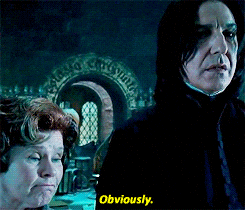
Their fixed lens and simplified design keep manufacturing costs low. An excellent choice for beginners or casual users who don’t need extensive manual controls.
Mirrorless cameras on the other hand are more expensive, because of everything we talked about (advanced sensor technology, interchangeable lens system, enhanced manual controls, etc).
Also, there is something to be careful about here.
If you decide to enter the mirrorless system, you are NOT buying a camera and you are good to go. The body of a mirrorless is useless, without the lenses you will need, lighting, and microphone (or flash for photos), a tripod or gimbal, etc. It's an investment!
This is why I would say to consider your long-term needs.
If you are starting out and need a reliable, low-cost option, a point-and-shoot is a wise choice. For those ready to invest in their creative growth and want advanced features, a mirrorless system is the obvious choice here.
Bonus Tip: After you write down why you want to buy a camera (your specific needs), compare entry-level models against mid-range options to find the best balance between price and performance. The worst thing that can happen is to buy something THEN realizing it doesn’t do the one thing you needed it the most for.
Pros and Cons at a Glance
For the lazy ones out there, here is a table with everything I talked about summarized.

| Mirrorless | Point and Shoot | |
|---|---|---|
| Pros |
|
|
| Cons |
|
|
Which Camera is Good For You?
Well, it really depends on your needs and photography style. But typically, a point-and-shoot camera is the best choice for an easy, no-hassle experience. It’s compact, lightweight, and requires little to no manual adjustments. So, it’s ideal for travel, family gatherings, or quick snapshots without worrying about settings.
If you are taking photography seriously (as a career) and want more control, a mirrorless camera is the way to go. The ability to swap lenses, adjust settings, and capture high-quality images makes it perfect for anyone looking to improve their skills.
Remember: The best camera is the one you use confidently to tell your story!
